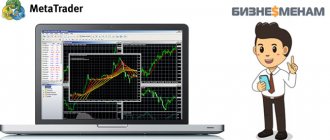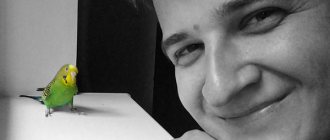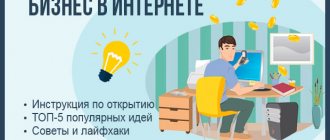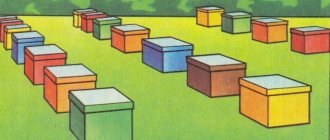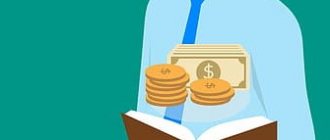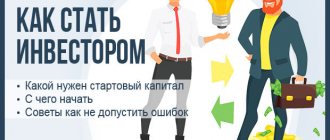Is it possible to become a trader from scratch, even if you don’t know where to start or have never seen stock market charts before? Let's try to understand the world of shares and investments on the stock exchange.
Let's consider frequently asked questions:
Is it possible to learn to trade without any knowledge?
Of course yes. You don't need to be an economist or a financial genius. There are many examples in the media about newcomers who have succeeded in this field. Every person who is interested and motivated with effort can become a trader.
Is today's reality considered a good time to start trading?
It's almost the same when the question arises: is today a good time to start exercising? Will sports be beneficial in the long run? Yes! That's right: that's the answer to the question.
Learning to trade is an investment in the future, either as Plan B, as an additional income, or as Plan A, as the main income in the future: some traders have the opportunity to devote full time to trading on the stock exchange, earn income from stock transactions, change employee status.
So, yes, now is the time to learn how to benefit financially from stock trading.
WE RECOMMEND: THE BEST FOREX BROKERS OF 2020 ON THE LEADING RATINGS
2007
Start from $100. | TRIPLE 13TH BIRTHDAY GIFT | review | reviews 1998. Start from 0$. | $5000 DEPOSIT BONUS | review | reviews 2007. Financial Commission. 100% DEPOSIT BONUS | review / reviews 2007.
Start from 1$. MAXIMUM BONUS $1500 | review / reviews TOP BEST BINARY OPTIONS BROKERS 2020
*BO. No verification required! | review | reviews | START TRADING WITH 10$ *BO. Profitable terms. | review | reviews | UP TO 218% PER TRANSACTION!
The first steps of a trader from scratch
What is the best way to start on the stock exchange?
First, do some research:
- What is trading?
- What results are possible if you devote time to trading?
- What resources to choose for proper training?
- What steps do you need to take to become a trader?
Why do some people say trading is a scam? For example, is the intention to become a surgeon a scam? After all, it is 6 years of training, and for many - on a paid basis (plus additional training) to learn how to heal or work with people, even if there is a risk of failure and death. Is this a scam? Nobody will say that.
The same thing happens with trading. People pay money to train and spend a lot of time studying so that they can later become a professional trader in managing the markets (even with the possibility of making losses). There are no guarantees, but this is not a scam. It's a race to success.
And just as a doctor spends years studying and practicing to do the job well, a trader does the same: many hours of effort to get the most effective result.
Of course, not everyone can be a doctor or a trader. Only the one who is persistent.
Is it possible to ultimately understand trading charts if they are now perceived as Chinese letters?
Over time, the chart data will be interpreted on a subconscious level. It's important to practice. Only starting from scratch and learning from your own mistakes, under experienced guidance during training, can you make a profit.
Education and practice are the path to professional trading!
Who is a trader
A trader is a person who trades in financial markets. Buys low, sells high.
To make money, traders must determine how prices will change. To do this, they study the market - conduct technical or fundamental analysis.
A good trader can say in any transaction: “I bought because... I sold because...” Everything is logical and reasonable. No intuition, no spontaneous deals.
What is bought and sold on the financial market is called a financial instrument. All financial instruments are divided into three groups: securities, currency, raw materials.
What is trading
Earning money by speculating in various types of assets on financial and commodity exchanges is called trading.
Assets are currencies (rubles, dollars, pounds sterling), securities (stocks, bonds, derivatives), goods (oil, gold, grain crops, etc.).
Before becoming a trader and starting independent trading, you need to master the theory of the profession and gain initial practical skills.
Where do traders trade?
If you choose to trade securities, you will be speculating in the stock market. If you choose a currency, then on foreign exchange or Forex. If raw materials, then on commodity raw materials.
Most traders speculate in the stock and foreign exchange markets. Securities and currencies change in price faster than commodities, so trading them is more profitable.
Today you don’t need to go to the stock exchange to make deals. Everyone trades easily via the Internet. You need to download a special program to your computer - a trading terminal and start earning money.
You can trade:
- At home.
- At the broker's office.
There are companies like United Traders that not only train traders, but also provide them with office workspaces. Once you have learned it, you come to the office every day, sit down at the computer next to other traders, open the chart and work.
Examples of independent trading
There are two types of trading: at market price and pending orders. Next, we will take a closer look at each of these methods of trading on the stock exchange.
Example 1: Market Execution
Market execution means that the trader opens his trades at the current price on the exchange. That is, he immediately enters the market, performing an operation to buy or sell a trading asset.
Example 2: Pending order
If the market execution of orders is clear, then with a deferred execution, the trader places his trading orders at the price he specified. In this case, there is a possibility that the price movement may not capture the placed order and, accordingly, it will not be opened. There are orders for breakout - stop pending orders (continuation of price movement) and rebound - limit pending orders (reversal of price movement).
How to become a trader
You don't know anything about trading. You have no money and experience. Is it possible to become a trader and achieve a stable income? Yes.
Select market
You need to decide what to give preference to: currency, securities or raw materials. If you have no money at all, you need to start with the Forex currency market. Here you can start with very little capital, because there is leverage.
The principles of technical and fundamental analysis are similar in all three markets. Moving from one segment to another is not that difficult. Start with Forex, understand what financial news is, how to read charts, try trading. Then, if you don’t like the currency, switch to securities.
Remember that professional traders do not jump from one to another. They choose a market, select several financial instruments for themselves and study them in depth. Get acquainted with the features, history of price fluctuations, and news that affect the exchange rate. Then they summarize it all in their heads and trade.
Choose a broker
A broker is a company that executes your trades. You clicked on the button “Buy ... shares for ... dollars” - the broker bought. They clicked “Sell” - he sold. Trades are executed by a robot, but it is monitored by real people who created the brokerage firm.
Most brokerage firms on the Internet are “gray” and unreliable. It is dangerous to trust them with money.
Verified companies for trading on the stock market:
- Finam.
- BKS.
- Zerich.
- Opening.
Verified companies for trading on the foreign exchange market:
- Forex Club.
- Alpari.
- InstaForex.
- RoboForex.
Read the article about choosing a Forex broker right now. It is necessary to pay attention not only to trading conditions, but also to the availability of training, guarantees, and licensing.
Complete the basic training course
A basic training course is usually available on the brokerage firm's website. This is a small amount of knowledge that will help you understand stock exchange terminology, financial news, and analyst advice.
Information may be provided in the form of text, videos or webinars. The Alpari company conducts 2-3 basic courses every week in the format of webinars, they are taught by professional traders from different cities. After the webinars, teachers always answer questions and give advice to beginners. The webinars are free and in-depth, you can watch and ask questions.
If you want to trade currencies, check out Alpari courses from these teachers:
- Alexey Kuznetsov,
- Eduard Sungatullin.
They are recorded on YouTube. Alexey Kuznetsov’s first webinar has not been posted, but it is an introductory one. Here, by the way, is the second one, which is already “on point”:
After watching the classes, download Alexander Elder’s book “How to Play and Win on the Stock Exchange.” You need to read before the description of the indicators. The book will not give you in-depth knowledge, but it will help you gather your existing knowledge into a whole and take a more systematic look at trading.
Trade on a demo account
Download a trading terminal to your computer, open a demo account and practice making trades. Your task is to learn:
- choose the right financial instrument,
- switch by timeframes,
- indicate the volume of the trading position,
- set Take Profit and Stop Loss levels,
- monitor profit/loss.
You need to download terminals from the websites of brokerage firms. Even if the program is the same, brokers have different sets of tools. And you won’t be able to trade with an InstaForex or Forex4You broker through an Alpari terminal. Although the program is the same everywhere – MetaTrader 4.
Develop a strategy
A strategy is when you clearly know at what time you need to open and close a deal. If you have a strategy, you can explain any of your actions: why you opened with this particular volume and not another, why you exited prematurely, why you reduced the position size.
You can't rush around in the market. You bought a currency, the market suddenly went down - you sold it. As soon as they sold, it shot up again, you bought/sold again - only amateurs do this.
The strategy should be based on market analysis: technical or fundamental. It is easier for traders without experience to get used to the technical ones; for the fundamental ones, they need to comprehensively study the market and understand financial news.
There are many areas of technical analysis. Which one to choose is up to you. The strategy can be combined from different types of analysis.
Watch Marat Gazizov’s webinars “Trading Strategy. Basic principle." There are five of them. Here's the first lesson:
This is an example of a simple trading strategy. Marat clearly explains where to enter the market and where to exit. In real trading, he often trades more riskily: immediately from support/resistance lines, sometimes taking into account Fibonacci levels, although he does not really trust them. Watch his analysis of financial markets to better understand trading principles.
This is an analysis for January 18, 2017. It is no longer relevant, but you can easily understand the principles of analysis using it. Marat posts current reviews on his VK page.
Test the strategy
Open the trading terminal, select a trading instrument and rewind the story to the end. Imagine that in front of you is a chart of real market quotes. Mark where you will open a position, where you will set Take Profit and Stop Loss. Then move through history, see where the profit will be, where the loss will be. Write down your trading results on paper.
When you go through the entire history of quotes, look at how much you earned. Highlight the periods where there were the most unsuccessful trades. Read the financial news during this time, think about what caused the failures. If you managed to make a profit on “paper” trading, you can move on to “live” transactions.
During the first month, trade using the strategy on a demo account, then switch to a real one.
Open a real account
In the basic course you will learn about the rules of money management - how to manage capital. Traders recommend depositing enough money into the account so that the risk in each trade does not exceed two percent of the total amount.
If you risk $100 on a trade, you should have $5,000 in your account.
Some Russian traders increase this level to 5%. American investor Warren Buffett believes that the risk should not exceed 0.1% of total capital.
Why is everything so strict? If you lose no more than 2% of your capital in a transaction, you remain psychologically calm and confident. If you lose more, you start to panic. Panic leads to rash actions: you either bet large amounts to “win back”, or “fall into a trance” and stop speculating, missing out on profitable opportunities.
Start trading
When the strategy is developed and tested, the money is deposited, real trading begins. Risk on a demo account and risk when speculating with real money are not the same thing. As soon as there is a profit on the transaction, you will immediately want to take it by closing the position. As soon as a loss appears, you will also want to close. You will look at the graph and think: “What if it gets even worse?!”
How to solve this problem? There are two recommendations.
First. Set aside some capital for trading and imagine that you have completely lost it. That's it, you have nothing, this money will never come back to you. Bury them. And start trading. If the money is lost, then you don't care whether you have a profit or a loss on your balance sheet. You just trade and don't expect anything. You are cold-blooded and calculating.
The second recommendation follows from the first. When you look at your balance sheet, don't imagine a wad of money that goes up and down. These are just numbers. They don't mean anything to you.
If you have not mentally parted with your money or you desperately need profit, most likely you will leave all your money on the stock exchange and further fray your nerves.
Keep a diary
Record all your transactions in a diary. Analyze achievements and mistakes. You can keep a diary in Microsoft Word. Take screenshots from the terminal, transfer them to a sheet and write explanations.
The diary will teach you to be more attentive to trading, make you think about the strategy, and refine it.
Advantages and disadvantages of work
Advantages of working as a trader for yourself:
- Almost round-the-clock trading mode of global trading platforms. Breaks for national holidays, weekends. By concluding an agreement with a broker to work on foreign stock exchanges, a trader gets the opportunity to trade non-stop.
- Tradable assets of different classes. Securities, derivatives (shares, bonds, receipts), commodity items (precious and non-ferrous metals, petroleum products, currency, etc.).
- Possibility of long-term investment. Perhaps the most important component for a trader gaining access to this box of wonders - the stock exchange. Passive investing allows you to increase the value of your personal assets with minimal investment of time.
- You can earn income on the stock exchange not only from the growth in the value of assets, but also from dividends on shares.
- You can buy and sell on the stock market from anywhere in the world where you have access to the network.
The disadvantage of trading on the stock exchange is that you can not only make money, but also lose it. As in any business, the risks are borne by the investor himself.
How to trade without investment
There are brokers who provide money for trading. To obtain them, you must first undergo training and demonstrate mastery of a trading strategy.
Go to the United Traders broker website. The company trades securities. There is an expensive training course on the site, it costs $1,000. Half of this amount goes to your account. After training, you can receive money from the company, the maximum amount is $1,000,000.
Another good broker is ForexStart. Here you will be offered to receive money for trading without investing at all. The principle is this: you undergo free training and receive $100 in management. Within two weeks you need to earn at least one dollar and not allow a drawdown of more than 20%.
If it works, go to the second level - you already have $500 under management. At the fifth level, your capital will be $20,000. You will receive 50% of the profits without investing a cent of your own money.
Trading Strategy Basics
Whatever type of trading you choose, trading without a clear strategy is pointless. After all, it is a well-thought-out strategy that helps you avoid making gross mistakes.
It helps not only not to be left without a deposit on the first day, but also to have a constant and steadily growing income.
What is strategy? This is a set of rules and tools that you will use when working on site. You must strictly adhere to these rules without any exceptions.
It is important to understand that a trading strategy is a complex concept that includes:
- Analytics tools;
- Trade entry points;
- Set of rules for capital management;
- Psychology.
Let's talk a little more.
Analytical tools include fundamental and technical analyzes (discussed above). They complement each other and allow the trader to see both the cause and effect of price movements.
However, everyone chooses the most understandable and convenient type of analysis for themselves. If you read the chart like ABC, then it is not at all necessary to know about the coup in some “Limpopo”. And, conversely, if you are sure that after the speech of the head of the Central Bank in one of the leading economies in the world the quote of a certain currency pair will jump sharply, then it does not matter whether you know how to use “Elliott waves” or not.
How to determine the moment to open a trade? This is the definition of market entry points. Analytics tools provide you with a huge amount of information all the time.
The main thing is to read it correctly in accordance with your methodology. What if yesterday it was perfect, but tomorrow it doesn’t work at all? The answer is obvious: the market has changed, therefore, it is necessary to adjust your methodology, your tools.
A trader constantly improves his skills, only experience helps him look at the situation in a new way, and consider nuances that you cannot read in textbooks and standard signal settings.
"Do you have a plan, Mr. Fix?" Yes, yes, a trading plan. A plan for managing your capital. One desire to earn money, albeit a huge one, is not enough!
You need to clearly know what your long-term goal is and what your plans are for today. What restrictions have you set for yourself? What would you do in an emergency situation? You must have a clear answer to all questions, where there is no place for emotions.
You must clearly formulate for yourself: how many trades can be made per day, how many losing trades can be allowed, what is the maximum transaction amount. If, after opening a trade, you realize that the risk of loss is very high at the moment, it may be better to cancel the trade.
Remember one of the golden rules of risk management - the risk per transaction should be no more than 1% of your deposit.
The main task of a trader is not to obtain excessive profits at any cost, but to preserve his capital. This principle is already from a topic in psychology. After all, after several profitable transactions that require high concentration, the trader involuntarily relaxes his attention, which can lead to unexpected failure.
Never allow yourself to work in a bad mood. Emotions are your first enemy; they interfere with concentration.
You don’t need to prove anything to anyone (including yourself). Tomorrow will come too. Trading takes place five days a week. The market does not tolerate fuss and haste. This postulate should always work, every day.
Types of software for online trading
A variety of software has become an integral part of effective online trading. The software is used to create trading terminals, strategy testers and templates, and robot advisors.
Software for beginners
Novice traders, due to lack of knowledge and experience, prefer to use automated systems as much as possible. Their arsenal of trading methods is dominated by robot advisors, ready-made strategy templates and programs for receiving trading signals, and the popular MetaTrader 4 as a trading platform.
Rice. MetaTrader 4 terminal window
The trading process is helped by mastering training programs that are equipped with functionality with examples of transactions, terminology, principles of operation of exchanges, and other introductory materials.
Software for professionals
Programs for professional traders are aimed at deep analysis of the market using methods of fractals, clusters, quanta, volumes, etc. ATS and strategy testers are used as auxiliary tools in the preparation of individual trading tactics.
Examples of software for professional trading include the platforms ATAS (Order Flow Trading company), SaxoTraderGo (broker Saxo Bank) and trading engines, for example, QScalp for high-frequency trading in short-term strategies.
Rice. SaxoTraderGo terminal window
Automated trading software
Programs for automatic trading are used in all types of markets (stock, Forex, cryptocurrency) and occupy more than 70% of all transactions. Such software may be based on analytics based on technical or fundamental data.
Automated trading software features include:
- market analysis according to the conditions of the features and trading strategy used;
- automatic opening/closing of transactions, with placement of stop orders according to specified conditions;
- risk management - limiting the number and volume of transactions in the event of unfavorable price movements.
To create a mechanical trading system yourself, you can use a special terminal TSLab (trading systems laboratory), which allows you to develop, test and optimize trading robots even without knowledge of programming basics.
Main advantages of TSLab:
- an interface that allows you to compose a script using ready-made blocks;
- Russian-speaking technical support;
- the ability to use robots on different trading terminals;
- built-in risk module that insures against high risks (transactions at inadequate prices, an excessively large number of open positions for one asset) and technical failures.
It should be understood that there is no perfect software for automatic trading - market conditions are constantly changing and require regular adjustments in the algorithms that were originally included in the program.
A professional trader does not focus on results
Exactly. He focuses on the process of his trading, tracking all the components of his trading and constantly improving them.
Many new traders think about the big money they want to make from the market. For example, if they have $1,000 in their account, they hope to earn seven figures within the next few years. However, this will not happen. Average returns in trading are only 20% per year.
In the picture below you can see the average returns of outstanding traders and investors. The horizontal axis is the number of years they have received income from the market. Vertical – their profitability during this time.
Now you may be thinking that if the best traders and funds earn an average of 20% per year, then how much can the average retail trader earn? It all depends on your risk management, time frame and trading strategy. There is no average value for everyone. You will say that intraday trading is more profitable and gives you the opportunity to earn more than 20% per year. Yes it is. But it's not that simple.
How to make money on Forex and be successful?
As a Forex trader, you can work from almost anywhere you have internet. Hotel rooms, cafes and - thanks to the latest technological developments - the most remote corners of the world. Forex traders are blessed with strong growth potential, and of course you will want to achieve that kind of success.
The main thing to remember is that becoming a really good trader is not easy. But all your efforts will not be in vain, and what you get as a result is worth the effort and time spent. And the sooner you start your training, the faster you will become a successful professional trader. So why not start trading now?
How to make money on Forex thanks to a good knowledge base
The Forex market is constantly changing, so traders need to understand when the market is moving up and when it is moving down. There is no formula or set of rules that guarantee success in Forex. But a combination of patience, talent and careful attention to all details will help in achieving success.
Understanding this is the first step in learning Forex. If you are interested in starting Forex education, we recommend that you take Admiral Markets' free "Zero to Hero" course so you can learn to trade Forex and CFDs with online lessons from experienced professional traders.
The ability to understand odds, charts, and indices in trading should be considered a skill to strive for when you start learning Forex trading. At first, you may want to know everything at once, but it is important that you still approach education rationally.
You should constantly analyze your results to understand the reasons for your victories and defeats. So, why is it important to learn how to trade Forex correctly?
How to make money on the stock exchange wisely
To better answer this question, here are the basic principles to follow:
Pay attention to money management
This is a really important element. Even when you make a mistake or suffer a loss, it is important for you to control these events and pay increased attention to money management.
Example: If your risk is 10 euros per trade and winning positions remain intact, you can start developing a profitable strategy in the long term. The risk-reward ratio is also important for building an effective trading strategy.
Control your emotions
Good money management helps you stay informed and allows you to continue trading even in the most difficult times. However, paying attention to a trader's psychology is a fundamental element of his success. Discipline is one of the most important components of successful trading.
Diversify your portfolio
You must know how to diversify your investments or your trading strategies in order to trade Forex successfully.
For example: You can develop a range strategy and a trend strategy to adjust to market conditions and also take advantage of the opportunity to balance your trading.
Demo account in teaching trading - benefits and harm?
Free test trading mode has become very popular since the spread of Forex. This opportunity is positioned as a unique chance for beginners to learn trading absolutely free. At the same time, an alternative opinion is popular. Allegedly, the training regime initially instills a frivolous attitude towards trading and, in the long term, harms beginners.
Arguments for a demo account in teaching trading:
- the ability to quickly master all the nuances of the trading terminal;
- risk-free training with trading on the real market.
Arguments against demo accounts for those who are learning to trade:
- developing the wrong attitude towards money;
- stimulation not of trade, but of “gambling” with random transactions.
All the arguments presented have a real basis. His strengths are beyond doubt. But the disadvantages require separate consideration. Opponents of “trading with candy wrappers” argue that this leads to the formation of an initially incorrect psychological attitude regarding money management or capital management. A real deposit can no longer be restored in 1 click.
Therefore, traders who are used to “trading” (really just “playing games with withdrawal of money” by clicking up or down) on a demo face big problems when trying to switch to a real deposit. This statement is true only in one case. If a beginner really starts to abuse the training regimen, using it as entertainment. However, it is worth noting that an initially serious user is unlikely to fall into this peculiar trap. Therefore, in fact, a demo account brings significantly more benefits to learning trading from scratch than harm.
When trading in free mode, novice traders can be advised to treat it psychologically in the same way as a real deposit. And if it is lost, before clicking the “Update” button, first establish the reasons for what happened. In conclusion, we note that you can immediately start with real trading. But only if the rules of ready-made strategies and money management are strictly followed. At the initial stage, any “amateur activity” can lead to significant losses.
Just make a forecast where the rate of the selected asset will go: Up or Down. Training on a free demo account. With the correct forecast, profit is up to 90% of the bet . And all this with the best broker Binarium. Don't put off until tomorrow what you can earn today!
A professional trader is not a hedge fund trader
When you hear a professional trader mentioned somewhere, the image that probably comes to mind is that of a hedge fund trader, an institutional trader, or a bank trader. But in reality, this is not always the case. And history proves this to us.
In 1995, Barings Bank, the oldest merchant bank in Britain, collapsed due to a fraudster named Nick Leeson. Nick was long the Nikkei index and continued to average out his losses when the market moved against him. The Nikkei continued to fall after the earthquake hit Japan, with its loss widening to $2.2 billion.
The American hedge fund Long Term Capital Management was founded by outstanding minds in the field of finance, Nobel Prize winners Mair Scholes and Robert Merton. However, in 1998, Long Term Capital Management almost went bankrupt, suffering huge losses. It took help from the Federal Reserve to save it. This happened because the hedge fund used a lot of debt (about $30 for every $1 of equity) and covered debt with government bonds. When Russia defaulted on its debts in 1998 and the bonds plummeted in value, it resulted in losses of $4.6 billion.
In 2007, investment bank Bear Sterns announced its first loss in 80 years. He lost $854 million and another $1.9 billion on subprime mortgages. Ratings agency Moody then downgraded Bear Sterns to junk status, causing markets to panic. No banks were willing to provide him with a loan to pay off his debts. Ultimately, Bear Sterns was bought out by financial holding company JPMorgan Chase with help from the Federal Reserve.

